Learning on Country delivers ‘better school experiences’ for Northern Territory youth
The idea that education is too difficult and expensive to deliver in remote Northern Territory may be a myth. Here’s proof that it can and does work.
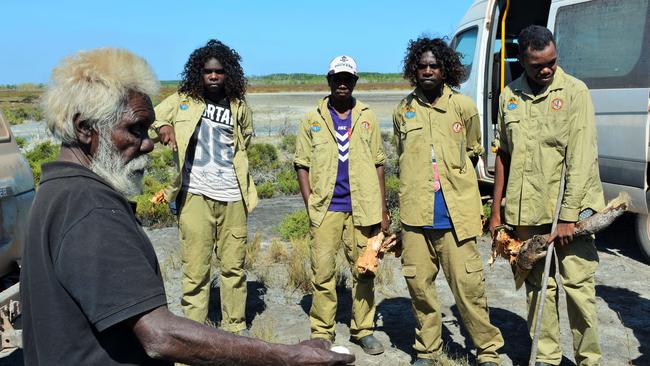
As the fire starts to catch, the termite mounds poke through the flames and Arafura Swamp rangers teach students the process of prescribed burning.
One day, it will fall to these young people to protect their country in Ramingining from fire.
Just over 100km away, in Maningrida, students are undertaking a coastal biosecurity survey with the Department of Agriculture, Fisheries and Forestry.
This is what Learning on Country looks like, a program run by the Northern Land Council in 17 schools across the Top End that aims to improve the school experience of Indigenous students. It is just one of many programs busting the myth that education is too difficult and expensive to deliver in remote Northern Territory.
NLC chair Samuel Bush-Blanasi says whether they are running vocational training or first-aid courses, Learning on Country helps “bring kids through the school gate”.
“This program is planned to make sure that they go to school, have attendance, get their literacy and numeracy, and then learn on country about fire management, bush food, all that two-way learning,” says Bush-Blanasi, a Yolngu man.
“It’s getting them out from behind the desk and out on the country … and then you bring country back into the classroom.”

The program tailors activities to the aspirations of the local community by engaging with local traditional owners and cultural leaders.
“Teachers and principals, they come and go – the community is always there,” Bush-Blanasi says.
He says the skills the students learn can take them in any number of career directions, but Learning on Country is also an “incubator” for land and sea conservation, generating frameworks for industries such as mining, farming, forestry, tourism, fisheries, aquaculture, horticulture, wildlife utilisation and biosecurity.
“They get to learn about culture, and they get to learn about things that they might not have in their world.”
Outback tech
It’s kudjewk, the wet season, and the tiny white long-necked turtle nuzzles up next to an equally tiny white crocodile. Kids gather around the school desk and pick up the freshwater animals.
The 3D printed creatures, designed by students, have travelled eight hours by road from Darwin to this school in west Arnhem Land where they are destined to be stars in a stop-motion animation. Soon the students will write them into a book. Then they’ll build their own freshwater habitats in Minecraft and the crocodile will live there virtually, too.
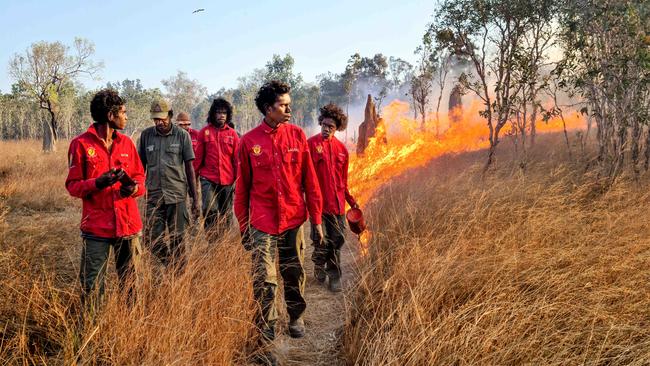
Culture Tech lead professional learning specialist Kiri Marschall says it’s perfectly possible to deliver ambitious technology-driven education programs in remote communities, including coding, design, 3D printing, animation and multimedia presentations.
“You can have all the bells and whistles, and I’ve seen this in city schools, you can have all the iPads, the fancy robots and everything,” she says. “But if a student can’t go to a piece of technology and use it for its designed purposes, it’s pointless. But we are getting kids to do that out bush.”
She works with remote schools to bridge the digital divide – setting up the internet, providing technology and training teachers so students receive the same education opportunities as those in Sydney. But the essential piece of infrastructure, she says, is culture.
“If we link it to cultural learning, or something that’s happening seasonally at that point in time, (the students) aren’t having to stress about the content,” she says.
Marschall says the students know the cycles of the plants, animals and landscape intimately.
“What they don’t know is, ‘How do I use an iPad to make a movie about it?’. And that’s so easy to teach.”
Marschall, a former teacher in NT public schools, says she’d like to see more “creative thinking” around Indigenous education. She says it’s possible to integrate technology in schools that have had limited experience with it, but the key to doing that is working out what the need is for that specific community.
Language and culture
Josie Skelton lays a set of memory cards on the table and explains why she works with elders to develop them using Groote Eylandt’s local language, Anindilyakwa.
“We’ve had kids who, we were told, could not sit still in a classroom and had not completed any work,” she says. “When they were handed worksheets in their language, they sat down and completed all of them.”
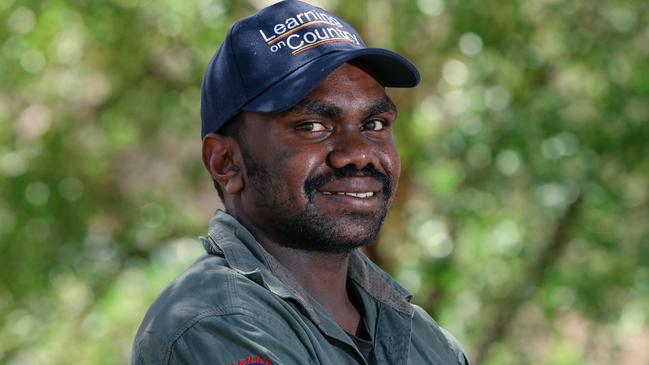
As education manager at Groote Eylandt and Bickerton Island Primary College Aboriginal Corporation, Skelton is helping to develop a bilingual curriculum for the primary boarding school set to open in early 2025.
“The local people lead the curriculum, and I write it so that it’s going to get across the line with the department,” Skelton says.
They use topics such as bush plants and freshwater and bush animals as ways to learn science, maths and English.
“This is an opportunity to be able to embed the culture in everything that the kids do,” she says. “It’s 50:50 language, but it’s actually 100 per cent country and culture.”
Bilingual education has a long, pockmarked history in the Northern Territory.
“Bilingual became a big, big issue,” says Mark Motlop, who was chair of the now-defunct Northern Territory Indigenous Education Council. “(The government) wanted to can the bilingual program in schools, but they don’t understand culture and language is identity. You learn your mother tongue first, and then you learn English. Otherwise, you don’t know who you are as an Aboriginal person. People like me, brought up in Western society, we lost a lot of our culture because we don’t speak language. So there’s a disconnect.”
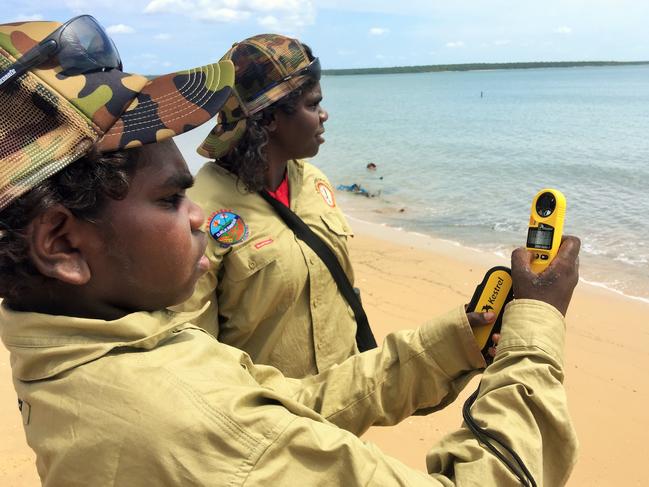
According to the NT government, there are nine schools that receive targeted funding to support bilingual learning, with money going towards the development of literacy resources and local teaching expertise in a First Nations language.
Aboriginal and Torres Strait Islander Social Justice Commissioner and Bunuba woman June Oscar says she has seen how “imported” curriculum that doesn’t consider language and culture can turn Indigenous students away from school and see them become “part of the deficit statistics”.
Skelton says incorporating local language and culture increases student engagement, boosts attendance and, ultimately, improves lives.
“I’ve had the kids here, when they were asked what they want to do, they said, ‘I want to work with Josie’. I said, ‘Hell no, you’re gonna be Josie’. You can’t just be the community police officer, you’ve got to be the sergeant, you’ve got to be the police commissioner.”
Bush uni
Perched in the Gulf of Carpentaria, in the southeast Arnhem homeland of Wuyagiba, a series of “glamping-stye” tent classrooms emerges from the landscape.
At Wuyagiba Study Hub, a pre-uni course for Macquarie University known as the bush uni, classes are varied – it may be bush medicine one day, data analysis the next. Traditional owner Kevin Rogers, chair of the Wuyagiba Bush Hub Aboriginal Corporation and a cultural professor, is proud to share his country with students, many of whom come from disadvantaged communities with high unemployment, overcrowded housing, health and social problems.
“It’s a good thing that it’s happened here and we want to develop it,” he says.
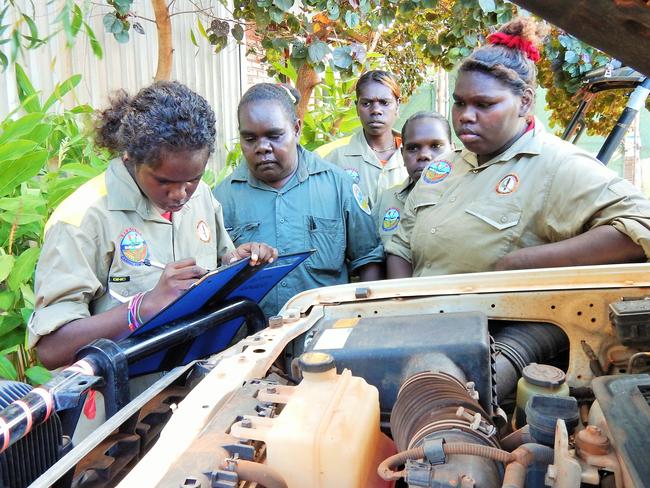
Establishing Wuyagiba wasn’t easy; the community built the structures with their bare hands. Rogers says the students are equally committed and determined.
For some, bush uni is a pathway to city uni. Since 2018, more than 100 students have graduated from pre-uni courses in Arnhem Land and 23 students have enrolled in full degrees, including education, at Macquarie University. The first graduates will finish this year.
“When students go to university, stay there for four years, find out what they need in life, there’s support and encouragement for them,” he says. “I keep telling them, it’s very important. That’s how we’ll manage to improve, for their personal direction. This is a way to do what they want to do – to run businesses, start businesses, whatever they want to do in life.”
Boarding at home
The plane takes off on Monday morning, seats taken up by teens. It’s not the usual school commute, but it’s the quickest way – and in some cases the only way – for students enrolled in the Makarrata Senior Years Program to get to class in Garrthalala, in remote northeast Arnhem Land.
Part of the Laynhapuy Homelands schools group, the program was created at the insistence of Indigenous elders who wanted their children to have access to secondary education on country. And because the Laynhapuy homelands are scattered across a large area, it made sense for the school to offer boarding.
Former principal Leon White says although Laynhapuy Homelands is an NT government school, the Geelong Rotary Club built the boarding facilities and a classroom, and the school was originally funded in 2006 by a federal grant.
He says it closed when the grant ran out, but it reopened in 2019-20 and this year has 35 students in years 10-12 who fly in from surrounding homelands and fly home at weekends. The challenges of boarding students far from their own communities has inspired other on-country boarding facilities. Tiwi College, on Melville Island north of Darwin, boards its students, most of whom come from a 60km radius. GEBIPCAC on Groote Eylandt, when it opens, will be entirely designed around the concept of on-country boarding.
“The boarding program at Garrthalala came about because community members wanted it, and that’s why it works,” says White.
Tilda Colling, Caroline Graham and Kylie Stevenson are independent journalists working in the Northern Territory and Queensland. This project was supported by the Meta Public Interest Journalism Fund.


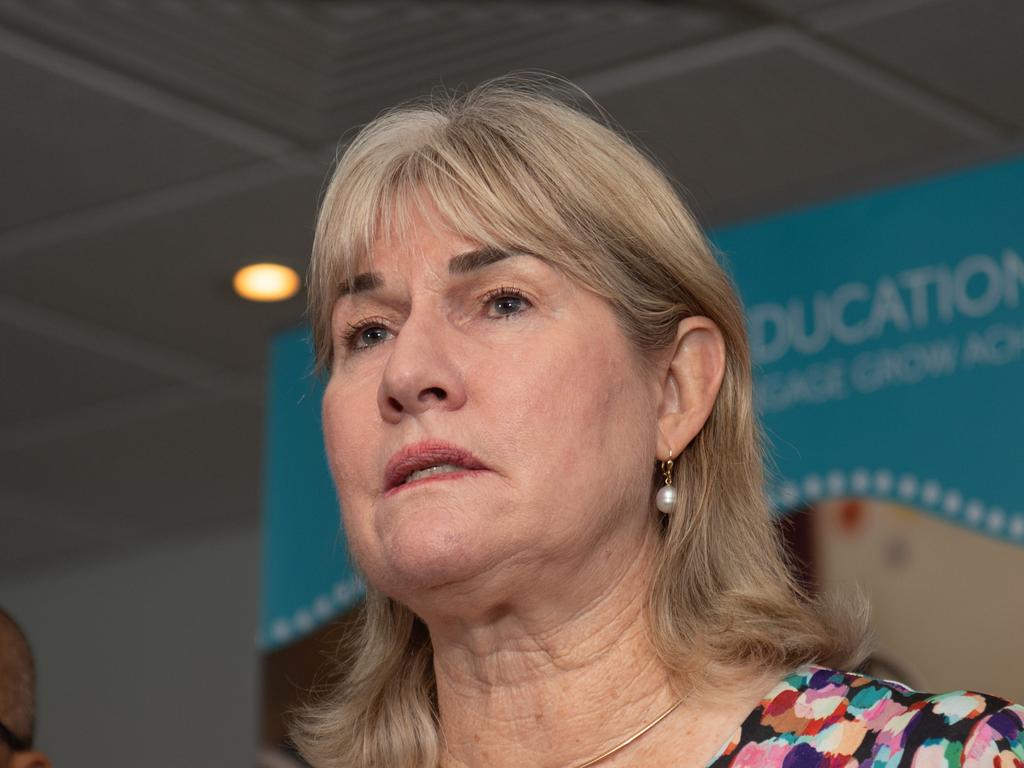
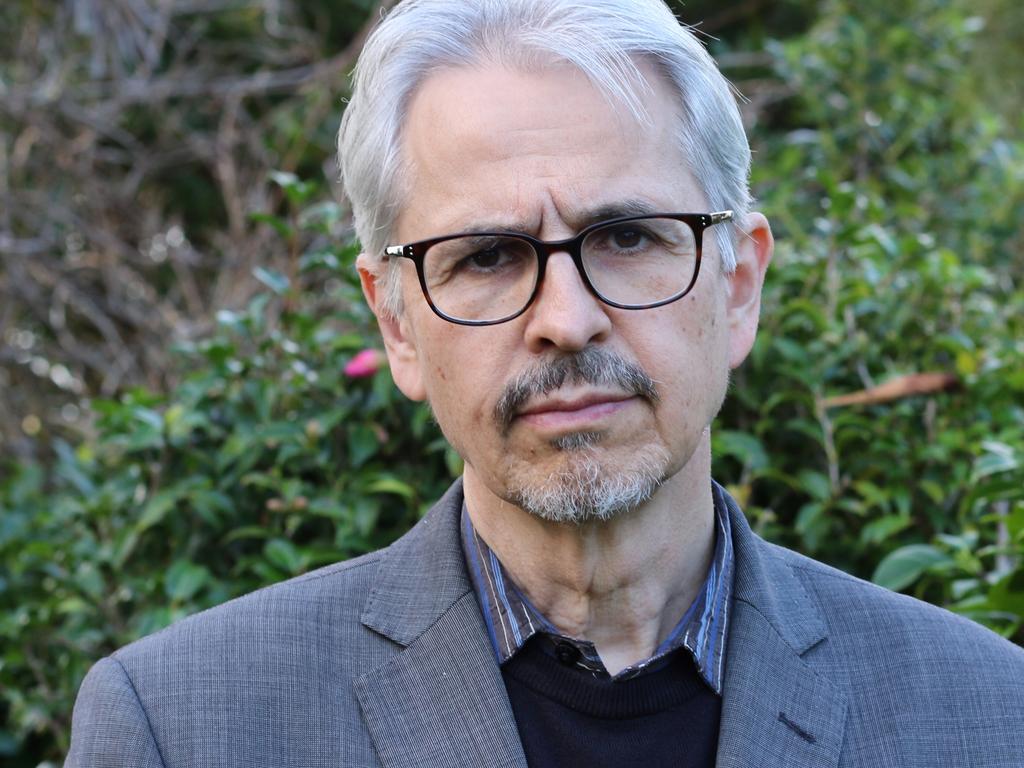
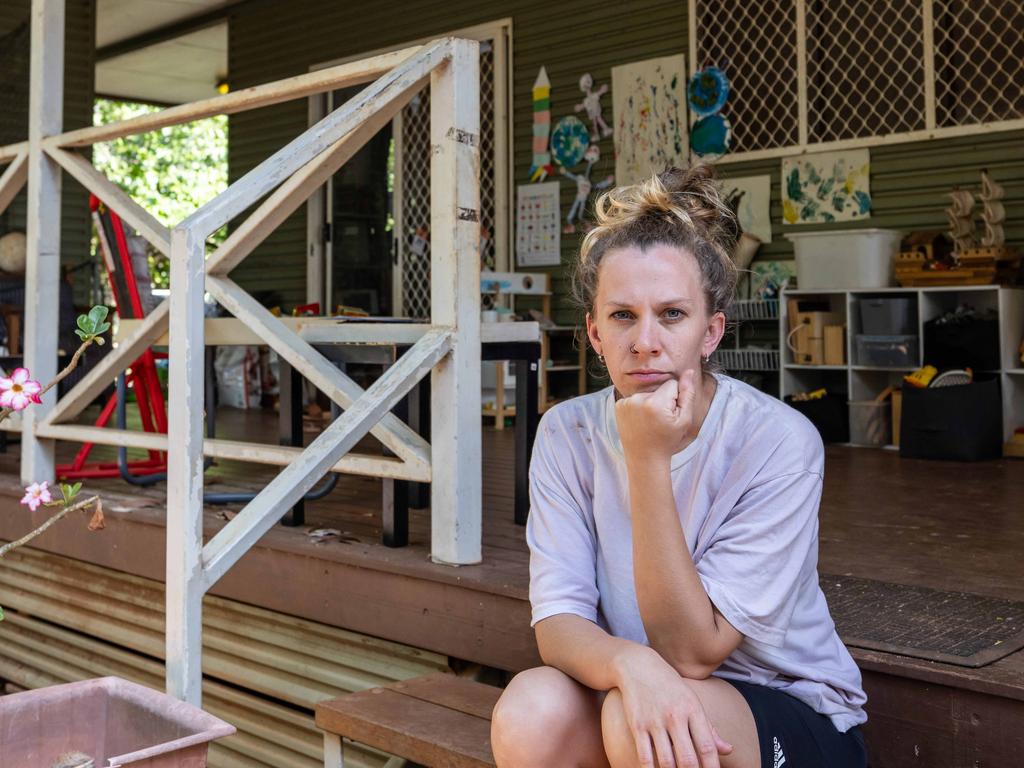
To join the conversation, please log in. Don't have an account? Register
Join the conversation, you are commenting as Logout